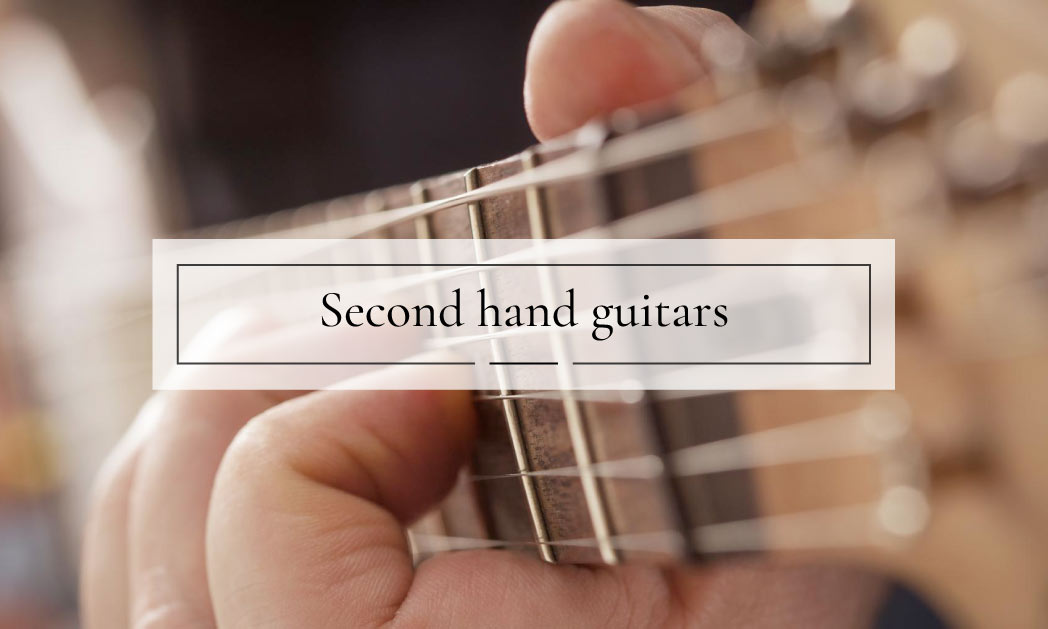As I have already written in another short article on the memory of guitars, I will start by insisting that it is not true that the guitars of the 60s and 70s are better than later ones.
It is a necessary preamble when talking about second-hand guitars.
Change of finish
Many second-hand guitars need to be repaired due to their age, especially because they have not been properly cared for. But it is also true that a guitar that has been treated with the attention it deserves will not require any repair or, perhaps, just some readjustment or nuance that does not affect its structure, its appearance, or its sound.
To begin with, we do not recommend removing the finish except in exceptional cases when the guitar is in very bad conditions. The change of finish implies a scraping that, inevitably, some wood will be removed, making the top somewhat thinner, which, added to the essential sanding, will affect the sound, even slightly and will leave the top more prone to the appearance of cracks. It is also an expensive repair that exceeds €1,500.
Fingerboard repair
Before deciding to buy a used guitar, it is important to try it, because the wood tends to move over time, since it is a living element, and if it has been subjected to environmental changes, especially humidity/dryness, significant damage may have occurred. What is most often affected in these cases is the fingerboard.
However, if when you try it, it is comfortable, even though the fingerboard has moved, it does not need repair, but if it is uncomfortable or makes strange noises or buzzings, then surely the fingerboard should be replaced, an expensive repair because it requires a lot of time and skill, and the price in any case would be higher than €1,000.
However, in the event that the fretboard has moved very little, sometimes it is solved by repassing the frets, but that is something that must be evaluated when inspecting the guitar, of course. And if the action is too high or too low, sometimes it would be enough to make a readjustment by lowering or raising the saddle (if the angle of the string allows it), which would not imply the replacement of the fingerboard. But the normal thing is that this mismatching of the action is due to the fact that the fingerboard has moved.
Handle width
There are also guitars that have been well cared for but the very tension of the strings, with the passage of time, causes the assembly to bow and therefore increase the action.
Before the 90s, the width of the neck, at the nut, was 54mm, but my brother, José Ramírez IV, among other adaptations to make the guitar more comfortable, reduced this measurement to 52’5mm, which is how we continue to do it in unless, under specific order, we are asked to make it with the previous measurement, or with the thin handle option (refers to the thickness of the neck, which before it was 24mm and now it is 22mm, and in the case of the thin neck it would be left at 20mm), which, however, happens very rarely.
The truth is that many guitarists find the previous width of 54mm uncomfortable, which is why sometimes they ask us to reduce it on second-hand guitars, for which the fingerboard has to be replaced, and in that case we take the opportunity to put a fiber carbon bar which, by the way, was also an improvement introduced by José Ramírez IV, which was later incorporated by many guitar manufacturers and artisan guitar makers.
Stripes and temperature changes
Other important damage to examine would be the cracks, especially if they have not been previously repaired and may open up and require a more complex repair.
The cracks can be produced by pressure, or by environmental dryness, and in any case, it is convenient to repair them as soon as possible because over time they tend to open. The normal thing is to repair them with small pieces of wood, but if the crack has opened, we have to inlay a thin strip with a similar wood to cover it.
Another of the most serious damages that the instrument can have is when the hill has been split, that is, the hill has cracked due to a sharp blow when the guitar has fallen on its block, especially when it was inside the case or a box. The repair is also complex and quite expensive, since it affects the structure.
If purflings, or the back strip, or the block strip, or other ungluing in the joints, it is a typical consequence of excess humidity or dryness. If the frets are moldy (greenish), it is also an unequivocal indicator of excess humidity. Likewise, when the ends of the frets are sunk into the edge of the fingerboard, it is due to excess moisture, but if they are protruding, the guitar has been subjected to excessive dryness.
The sound in the case of too much humidity will be muffled, while in the case of too much dryness it will be brighter. Also, excess moisture swells the fingerboard, so that the action drops and it is normal that buzzing may occur. On the contrary, excessive dryness shrinks the fingerboard, increasing the action and making the guitar more uncomfortable to play.
When there are unglued struts or bars, it is easy to detect why the guitar sounds like a rattle. And the struts as well as the bars, can be unglued by pressing on the top, or the back, or by a blow.
In summary, these are the most significant details that you have to pay attention to when you want to buy a second-hand guitar, and it is very important to take them into account before buying it since, for the instrument to be “playable”, the repair can be very expensive.
Amalia Ramírez
May 5, 2023


